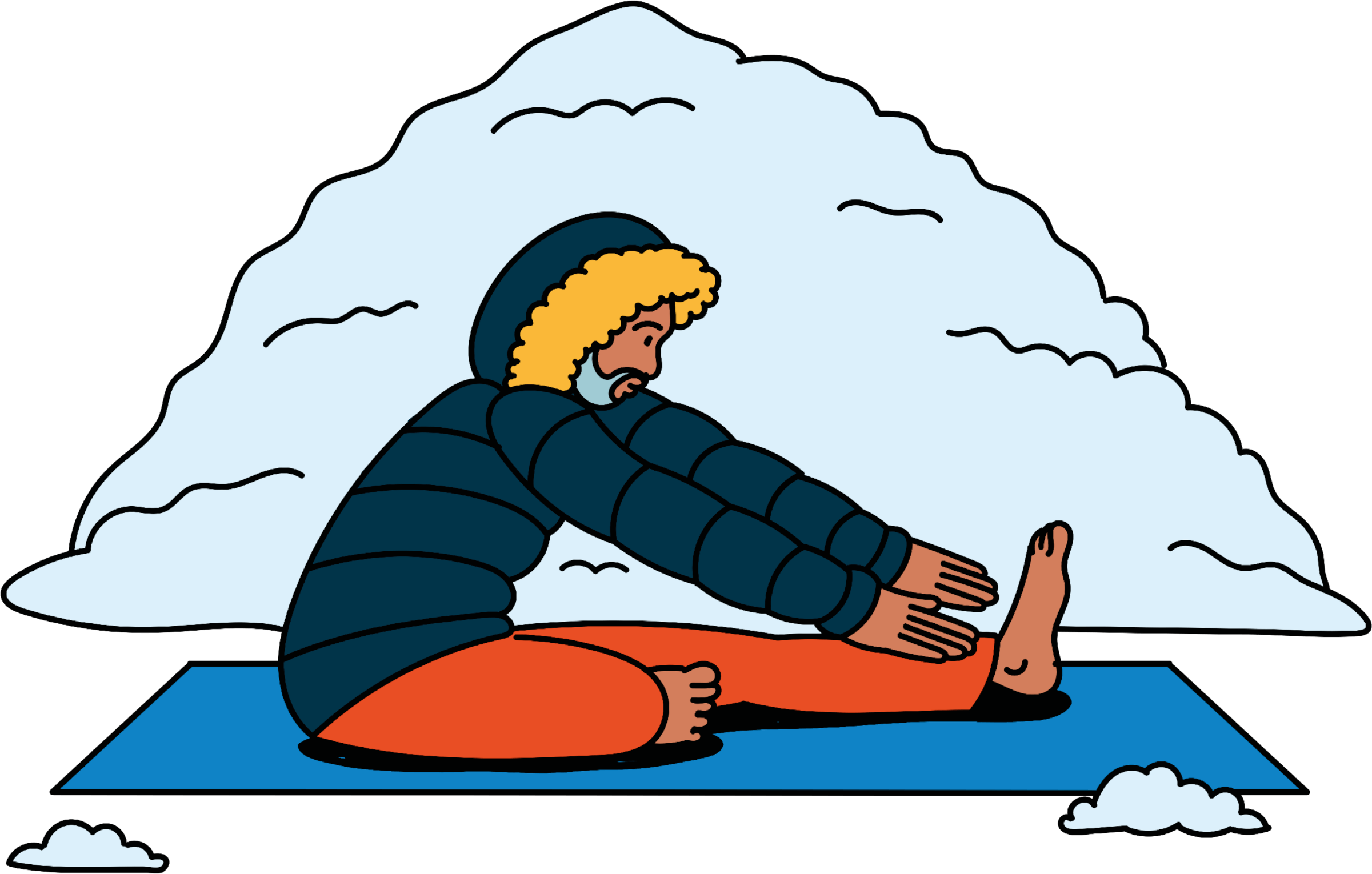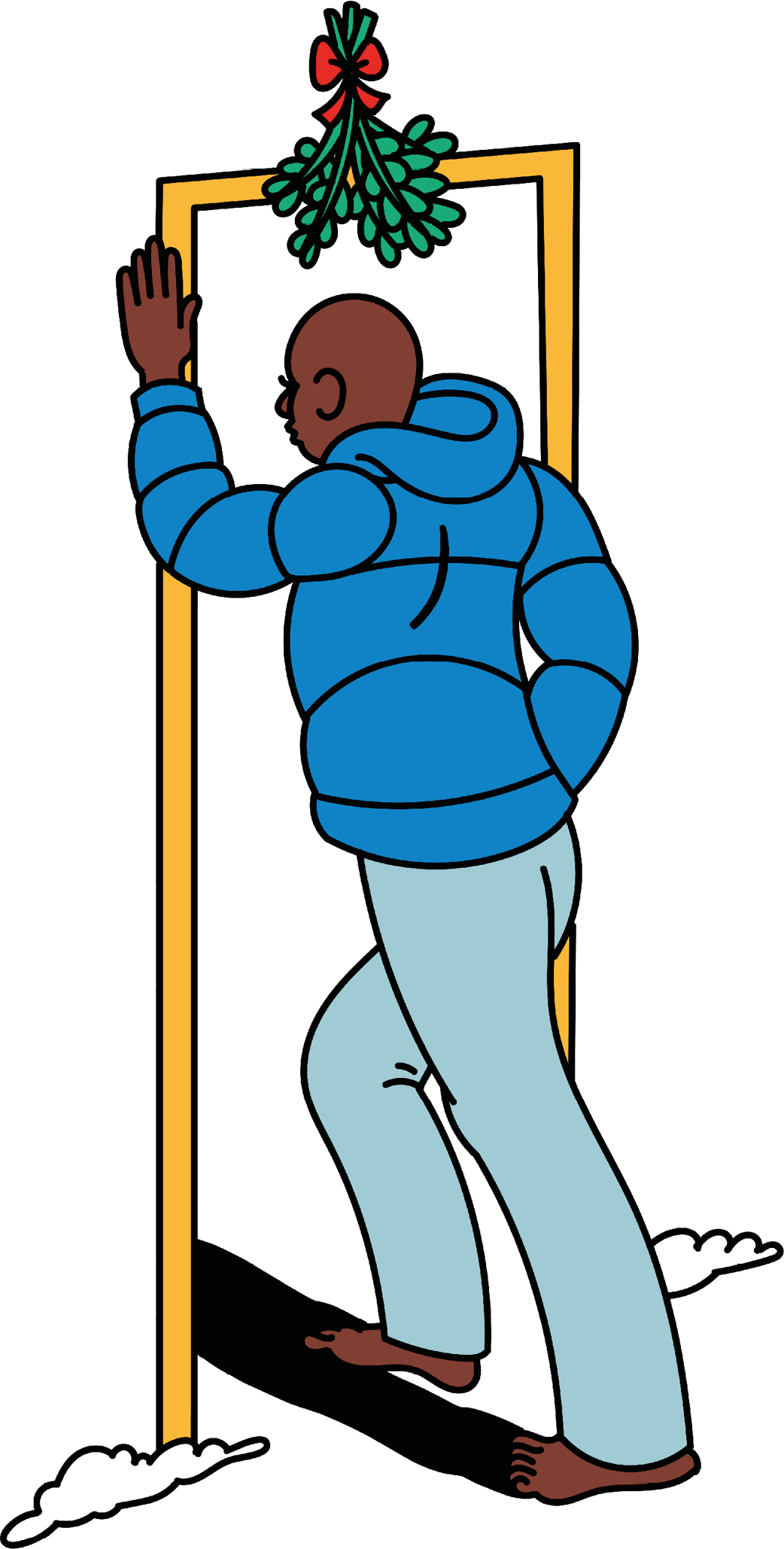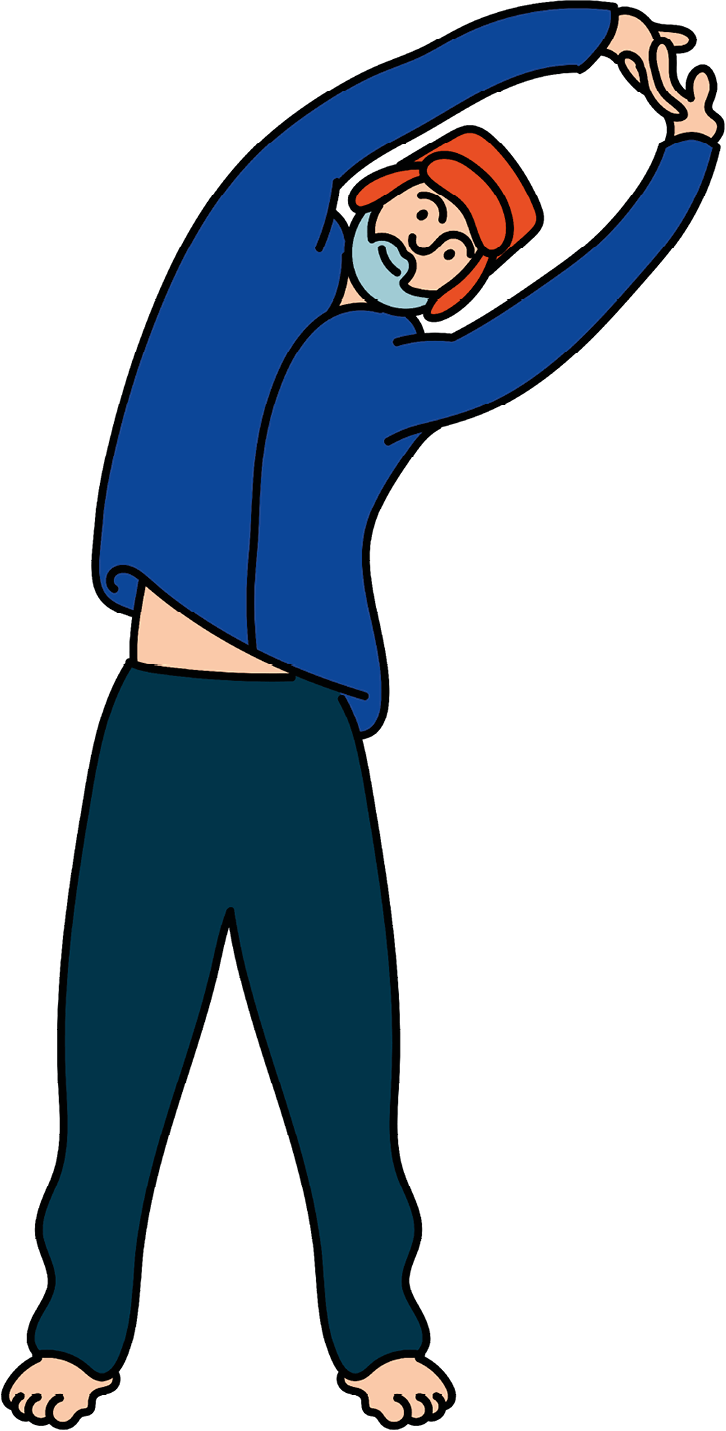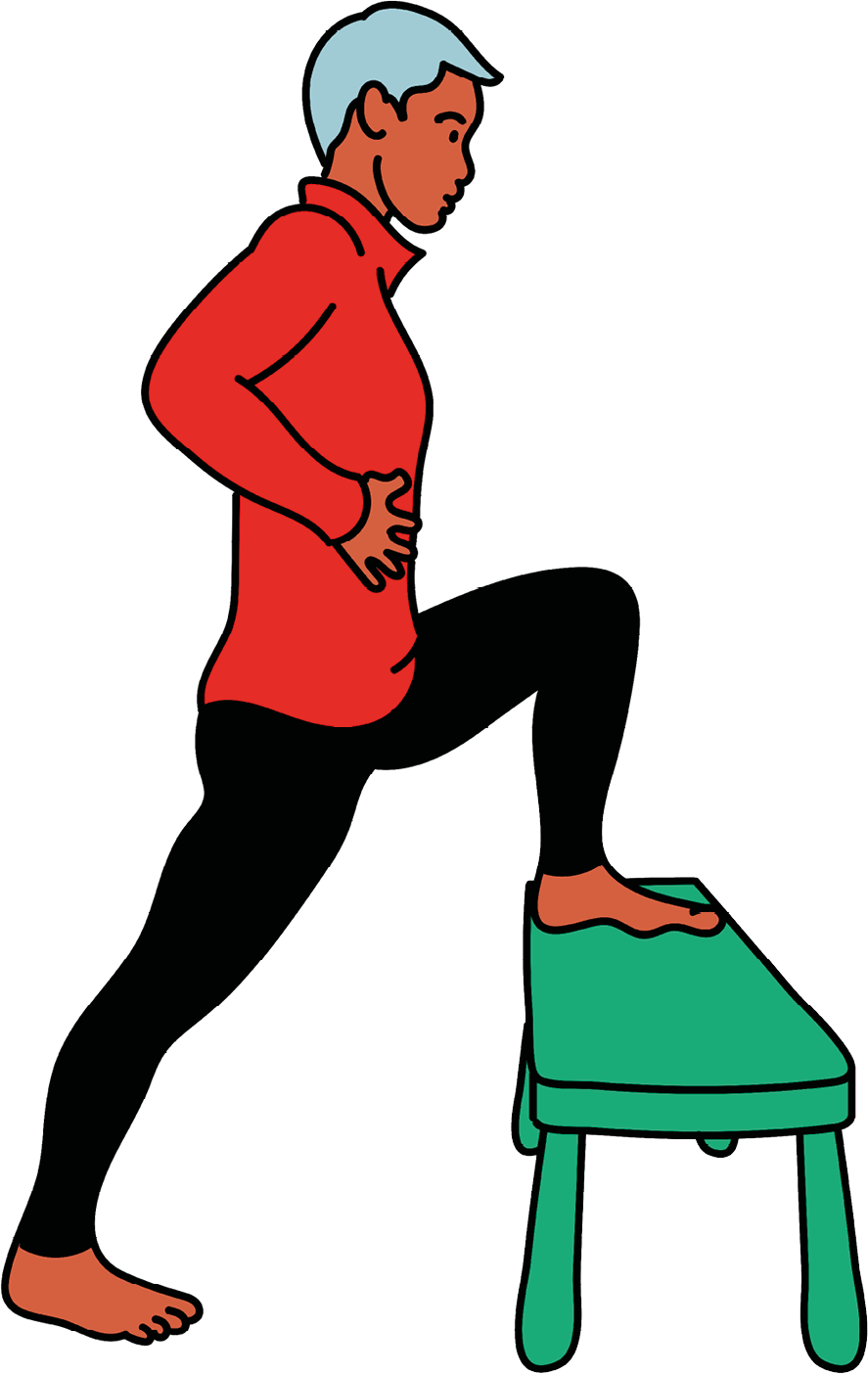HEALTHY YOU
Winterize Your Body
These 6 moves will help keep you limber and balanced when the weather turns nasty
By MYATT MURPHY
ILLUSTRATIONS BY LIAM EISENBERG
EVEN IF YOU’RE LUCKY enough to live with year-round warm weather, chances are the next few months are going to involve a natural slowdown in your physical activity, thanks to fewer hours of daylight and the hectic schedule of the holidays. “We all experience some degree of hibernation when winter comes,” says Nicholas A. DiNubile, an orthopedic surgeon and chief medical adviser for the American Council on Exercise. “But less outdoor activity and more chronic sitting causes four areas to tighten in almost everyone during the colder months, regardless of age or activity level.”
Specialists refer to these four body areas as BACH: the Back (lower), Anterior deltoids (front of your shoulders), Calves, and Hamstrings (back of your thighs). Let them tighten up over the winter, and not only do you put yourself at risk of neck, back and shoulder pain but, come spring, you might be more likely to pull something besides weeds. Incorporate these six simple exercises into your weekly routine, however, and you may improve your balance and flexibility, quiet those creaky body parts, and decrease your risk of falls this winter and injuries come springtime.

SINGLE-LEG HAMSTRING STRETCH
▶︎ Loosens the hamstrings, lower back and calves. Sit on the floor (or bed) with your legs extended straight in front of you. Bend your right knee and tuck your right foot along the inside of your left thigh. Slowly bend from your waist (don’t hunch forward) and reach with both hands toward your left foot as far as you can. Hold for three deep breaths, then switch sides to reach toward your right foot. Alternate from left to right to stretch each side three or four times.
TIP: Instead of reaching, you can slide your hands down your extended leg to help track your progress as you become more flexible.

DOORJAMB STRETCH
▶︎ Loosens the anterior deltoids. Stand inside an open doorway and raise your left arm out to the side with your elbow bent at a 90-degree angle, upper arm parallel to the floor, fingers pointing upward. Place your left hand flat along the frame of the doorway so that your entire lower arm rests on it. Gently lean (or take a tiny step) forward until you feel a slight stretch within the front of your shoulder and chest. Hold for 8 to 10 seconds, then switch positions to stretch your right arm. Alternate from left to right until you’ve stretched each side two or three times.
TIP: Keep your elbow in line with your shoulder at all times.

PILLAR STRETCH
▶︎ Improves shoulder mobility, posture, and rotator cuff function—as well as extends your spine. Stand straight with your feet hip-width apart and your hands clasped in front of you, fingers interlaced. Keeping your hands together, extend your arms over your head and turn your palms outward. At the top of the stretch, your arms should be straight overhead with your palms facing the ceiling. Hold for 20 to 30 seconds.
TIP: For an extra stretch, keep your arms extended above you and gently lean as far as you comfortably can to each side.

HIP FLEXOR STRETCH
▶︎ Loosens the hips and lower back. Stand in front of a sturdy bench or chair. Lift your left foot and place it on the seat of the chair, and rest your hands on your hips. Keeping your right leg straight, toes pointing either forward or slightly inward (whichever feels more comfortable), gently lean forward until you feel a stretch in the front of your right hip. Hold for 10 to 20 seconds, then step down so both feet are firmly back on the ground. Switch positions, placing your right foot on the chair, and again lean forward until you feel the stretch in your left hip. Alternate from left to right until you’ve stretched each side two to three times.
TIP: As you lean forward, be sure to keep your back straight and your heel on the floor the entire time.

KNEE-TO-CHEST STRETCH
▶︎ Loosens the lower back. Lie flat on your back on a bed or exercise mat, knees bent and feet flat. Raise your left knee toward your chest and grab your leg below the knee with both hands. Keeping your back flat, gently pull your left leg into your chest as far as you comfortably can, hold for 3 to 5 seconds, then lower it back down. Repeat the stretch with your right leg. Stretch each side four to six times.
TIP: As you become more flexible, try grabbing both knees at the same time.

STANDING WALL STRETCH
▶︎ Loosens the calf muscles and the Achilles tendon. Stand facing a wall with your hands flat against it. Take a small step back with your left foot so your legs are in a split stance (right foot forward, left foot back). Your feet should be flat on the floor and your arms fully extended. Without raising your heels, gently bend your right knee until you feel a stretch in the calf muscles of your left leg. Hold for 6 to 8 seconds, then switch positions (left foot forward, right foot back) and repeat with your right leg. Alternate from left to right until you’ve stretched each leg two or three times.
TIP: Don’t look down or arch your back.
Journalist Myatt Murphy has written nearly two dozen books on health and fitness.
Winter Tune-Up
Beat the cold weather blahs with this ‘nutritional antifreeze’

STAYING HYDRATED and maintaining optimal levels of vitamin D are crucial for muscle function, bone strength, and fighting off illness. But for many, winter means less time outside absorbing vitamin D from the sun, says DiNubile. “Plus, the heat from indoors can dehydrate you just as easily as being outdoors.” DiNubile recommends taking what he calls “nutritional antifreeze”: Drink a minimum of 64 ounces of water and take a vitamin D supplement each day. For those under 70, take 15 mcg (600 IU); over 70, take 20 mcg (800 IU).

Note: Consult with your doctor before taking vitamin D supplements.
Photo Illustration by Doug Chayka